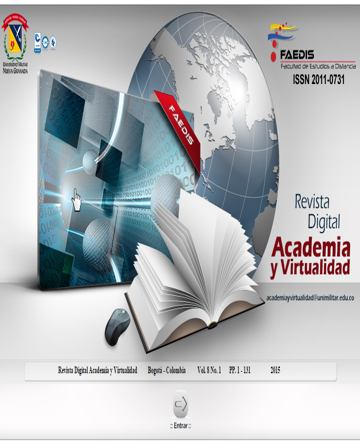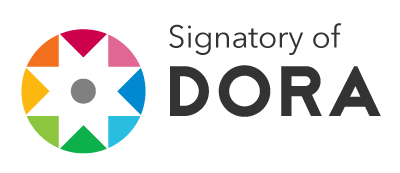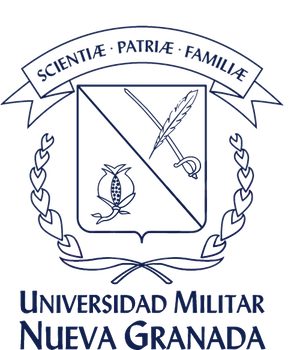Descripción de herramientas computacionales aplicadas para analizar el riesgo ocasionado por flujos piroclásticos
Resumen
Este artículo presenta la descripción de tres herramientas computacionales aplicadas a la simulación y evaluación de la reología de las corrientes piroclásticas de densidad, además de los modelos empleados para la determinación del comportamiento de dichos flujos. Las herramientas consideradas fueron TITAN2D, VolcFlow y FLOW3D; se analizaron teniendo en cuenta autores, sistema operativo, enfoque, variables y resultados.
Descargas
Disciplinas:
IngenieríaLenguajes:
esReferencias bibliográficas
Alberico et al. (2002). A methodology for the evaluation of long-term volcanic risk from pyroclastic flows in CampiFlegrei (Italy), Journal of Volcanology and Geothermal Research,116,
-78.
Bursik, M., Patra, A.; Pitman, E.B.; Nichita, C.; Macías, J.; Saucedo, R.; Girina, O. (2005). Advances in studies of dense volcanic granular flows. Reports on Progress in Physics 68, 271-301.
Constantinescu, R. (2012). Methods for quantitative volcanic hazard assessment in densely populated areas, with emphasis on pyroclastic flows. Case study: El Misti and Arequipa, South-western. Perú.
Delaite G.; Thouret J-C.; Sheridan M.; Labazuy P.; Stinton A.; Souriot T.; Westen, C-V. (2005). Assement of volcanic hazards of El Misti and in the city of Arequipa, Peru, based on GIS and simulations, with emphasis on lahars - Z. Geomorphology. N. F., 140, 209-231
Druitt T. (1998). Pyroclastic density currents. In Gilbert J.S and Sparks R.S. J (eds) The physics of explosive volcanic eruptions. Geological Society of London, Special Publication 145, 145-182.
Heim, A. (1932). Bergsturz and Menschenleben: zurich, Fretz & Wasmuth Verlag, p. 218
Iverson, R. (1997). The physics of debris °ows, Rev. Geophys, 35, 245-296.
Hooper, D. and Mattioli, G. (2001). Kinematic modeling of pyroclastic flows produced by gravitational dome collapse at Soufriere Hills volcano, Montserrat, Natural Hazards 23, 65-
Kelfoun, K.; Druitt, T. (2005), Numerical modeling of the Socompa rock avalanche, Chile.J. Geophys. Research 110:B12202.
Kelfoun, K.; Duitt, T.; van Wyk de Vries B.; Guilbaud M - N. (2008), Topography reflection of the Socompa debris avalanche, Chile. Bull. Volc. 70, 1169-1187.
Kelfoun, K. (2009). VolcFlow simulation of Volcanic Flows. Observatoire de Physique du Globe de Clermont-Fd (OPGC), Université Blaise Pascal. Francia.
Kelfoun, K. (2013) Consultoría Para La Modelización De Los Flujos Piroclástico Del Volcán
Tungurahua. Proyecto Sistema de Alerta Temprana y Gestión del Riesgo Natural Instituto. Clermont-Ferrand. Francia.
Kover, T.; and Sheridan, M. (1993). Numerical Models for pyroclastic flows of Mt. Unzen, Japan. Geol. Soc. Amer. Abstracts with Programs, 25,268.
Kover, T. (1995). Application of a digital terrain model for the modeling of volcanic flows: a tool for volcanic hazard determination. (MSc Thesis), State University of New York at Buffalo.
McEwen, A.; and Malin, M. (1989). Dynamics of Mount St. Helens’ 1980 pyroclastic flows, rockslide-avalanche, lahars, and blast, J. Volcanol. Geotherm. Res. 37, 205–231.
Macías, J.; Carrasco, G.; Delgado, H.; Martin del Pozzo, A.; Siebe, C.; Hoblitt, R.; Sheridan, M.; Barrera, D.; Hubp, J.; and Selem, L. (1995). Mapa de Peligros Volcán de Colima, Instituto de Geofísica, UNAM, México.
Macías, J.; Capra, L.; Arce, J.; Espíndola, J.; García, A.; Sheridan, M. (2008). Hazard Map of El Chichón volcano, Chiapas, México: Constraints posed by eruptive history and
computer simulations. Journal of Volcanology and Geothermal Research, 175, 444-458.
Mangeney, A.; Heinrich, P.; and Roche, R. (2000), Analytical solution for testing debris avalanche numerical models, Pure Appl. Geophys., 157, 1081-1096.
Murcia, H.F., Sheridan, M.F., Macias, J.L., Cortés, G.P. (2010): Titan2d Simulations of pyroclastic flows at Cerro Machín volcano, Colombia: Hazards implications.- Journal of
South American Earth Sciences. 29, 161-170.
Obando, M.; y Ramos, R. (2003). Evaluación de la amenaza por flujos Piroclásticos en la localidad de Cajamarca (Tolima) ante una probable erupción del volcán Cerro Machín. Universidad Nacional de Colombia, Bogotá.
Patra, A.; Bauer, A.; Nichita, C.; Pitman, E.; Sheridan, M.; Bursik, M.; Rupp, B.; Webber, A.; Namikawa, L., and Renschler, C. (2005). Parallel Adaptive Numerical Simulation of Dry Avalanches Over Natural Terrain. Journal of Volcanology and Geophysical. Research. Buffalo, NY, USA












